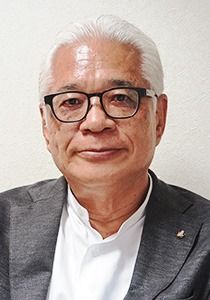
Nagasaki’s “Food Islands” Use Local Specialties to Grow a Brighter Economic Future
Society Economy- English
- 日本語
- 简体字
- 繁體字
- Français
- Español
- العربية
- Русский
Endangered Islands
Japan’s remote islands are in the grips of a demographic crisis. Populations are aging as they shrink, just as in other parts of the country, but the pace at which this is happening has regional authorities sounding the alarm. There are efforts afoot to stem the downward trend by playing to the strengths of communities. One such endeavor is headed by Senno Kazutoshi, president of Ritōshinkō Chihōsōsei Kyōkai, a promotional foundation that supports island communities in developing local goods into consumer products.
Speaking at the 2020 launch of the organization, which goes by the English handle “Japan Food Islands,” Senno stressed the direness of the situation: “When children turn 18, most leave the islands where they grew up and head for the mainland, where prospects are vastly better. They go away to school or to find work, get married, and then put down roots elsewhere. Parents know home has little to offer, and most quietly resign themselves to the fact that their sons and daughters are better off where they are.”
Senno sees developing the economies of island communities to give young residents broader options for building lives at home as key to reversing this trend. To this end, the Osaka native is tapping into his business know-how and connections built over his long career at Hankyū Department Stores, and as president of different Hankyū Group subsidiaries.
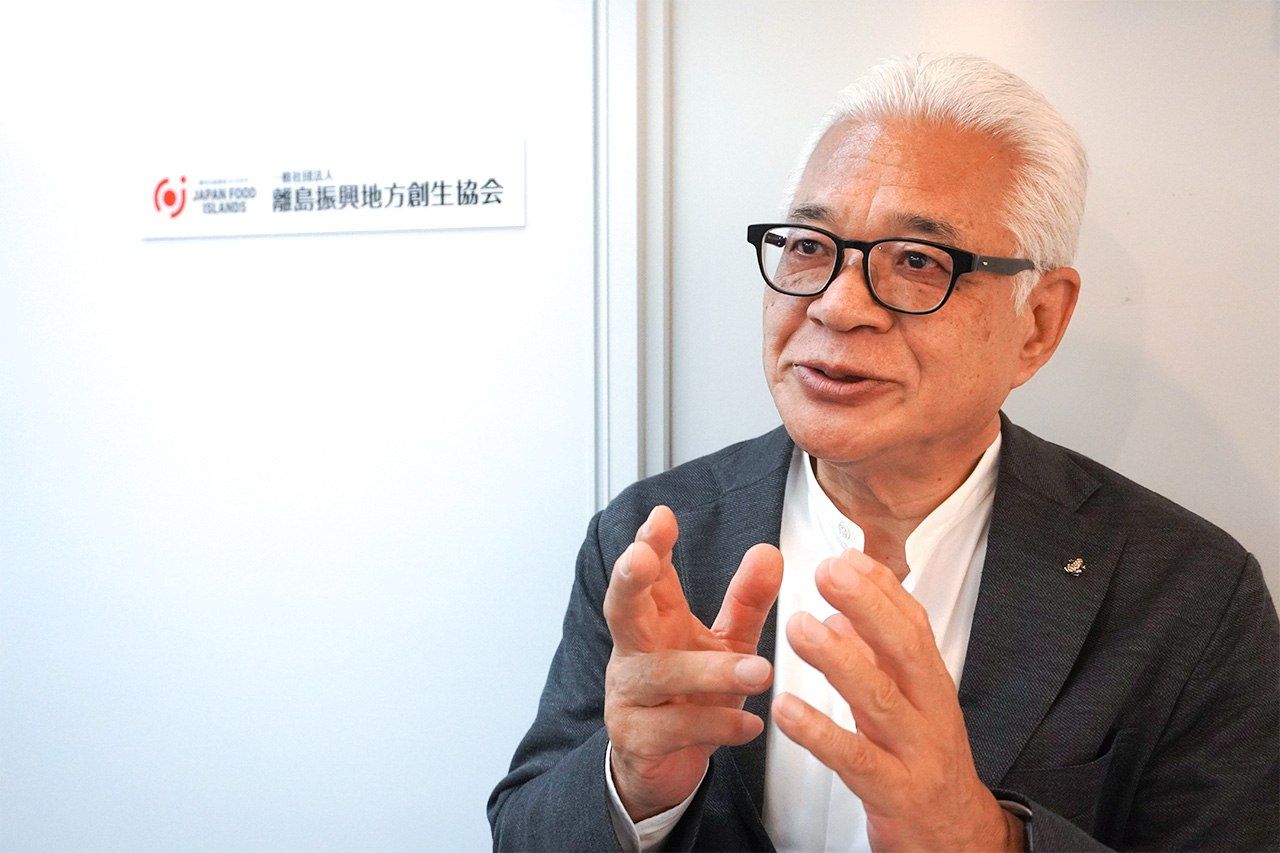
Senno Kazutoshi, president of promotional foundation Ritōshinkō Chihōsōsei Kyōkai. (Photo by the author)
The genesis of the Food Islands foundation was Nagasaki Governor Nakamura Hōdō turning to Senno to help come up with an action plan for improving the economic outlook on the prefecture’s many remote island communities. Nagasaki contains a sizable share of Japan’s some 250 inhabited satellite islands, and serving as a senior advisor to the prefectural government, Senno travelled to many to hear firsthand from residents about the issues they face. “I visited places like Tsushima, Iki, and the Gotō Islands, he says. “These places have seen their populations plummet by more than half over the last 60 years,” a decline that experts attribute to Japan’s broader migration trend from rural areas to urban centers. Senno describes how after five o’clock the activity in many places come to a complete halt, turning communities into ghost towns.
One aspect of island life that caught Senno’s eye, though, was the rich abundance of local agricultural and maritime resources. Trying foods like kankoro mochi, a type of rice cake mixed with sweet potato from the Gotō Islands, and savoring the wide variety of fresh seafood available, including such popular delicacies as oysters, buri (yellowtail), and tuna, he was amazed by the untapped commercial potential of the islands.
Employment and the economies on islands depend heavily on industries like farming, fishing, and ranching, and Senno recognized that these areas are crucial to revitalizing communities. After stepping down as chairman of the board of Hankyū Oasis, the supermarket arm of the sprawling Hankyū Hanshin Tōhō Group, he launched the Food Islands foundation in April 2020. Since then he has steadily built connections with businesses around Japan. The foundation currently boasts 150 firms as full-fledged or supporting members.
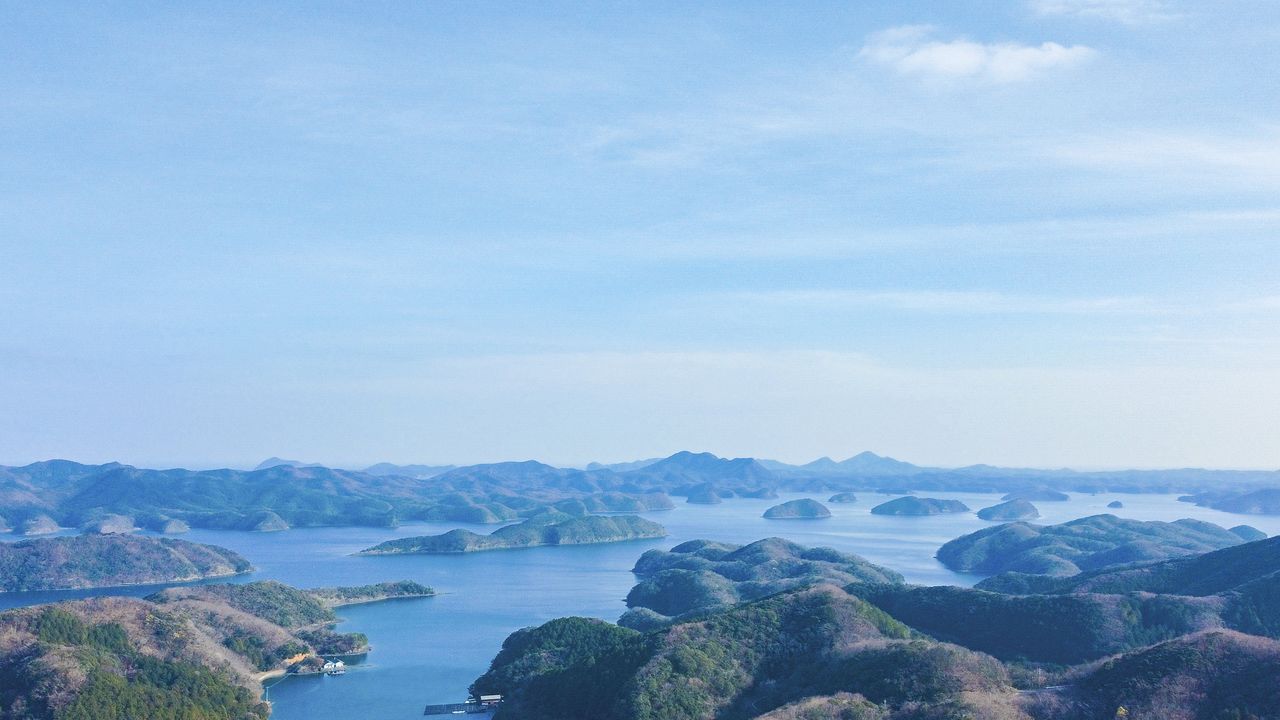
Tsushima’s scenic Asō Bay, as seen from the Eboshidake Observatory.
Connecting Islands to Consumers
The foundation focuses on three main areas: developing a value chain connecting island communities to mainland markets, strengthening the industrial infrastructure of islands, and improving the living standards of islanders.
Toward developing the value chain of islands, partner companies purchase agricultural goods and other commodities and work closely with locals to develop these into branded products. These are then sold on online platforms like Kuze Fuku Arcade, an ecommerce site specializing in regional foods that is run by a member firm. The foundation has also partnered with supermarkets and specialty shops mainly in the Kansai region in western Japan to offer products from the islands as part of scheduled marketing campaigns.
As the sales of products pick up, islands will need to explore new approaches for boosting productivity with the limited workforce available. Senno points out how farmers on Fukue Island in the Gotō chain, for instance, used to grow some 6,000 tons of sweet potatoes each year, using these to make shōchū and other commercial goods. “Now,” he says, “1,000 hectares of prime land sits abandoned because there aren’t enough people to farm it.”
The Food Islands foundation sees advances in wireless and other technologies as well as smart farming systems, which enable small groups of growers to cultivate more land than with traditional farming techniques, as game changers for bolstering productivity in shrinking communities.
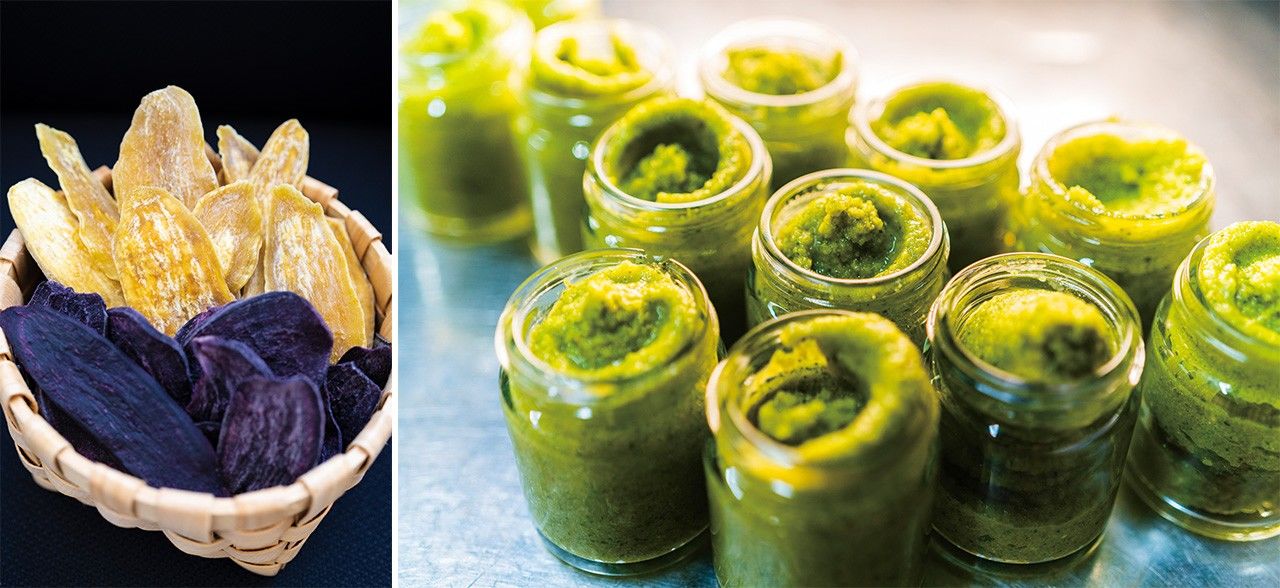
Different varieties of dried sweet potatoes from Gotō rice cake maker Matori (left) and bottles of the spicy condiment yuzukoshō made with yuzu from Iki Island.
Expanding IT infrastructure on islands will be key to increasing output and improving the quality of life of residents. Establishing high-speed and reliable Internet service is vital, and with the growth of remote work, it has the potential of wooing back former residents as well as attracting younger transplants from the mainland.
Building Island Brands
Different partner companies are using their expertise and technology in each of the three areas. For instance, frozen foods giant Nichirei Foods is working with broccoli growers on the Gotō Islands to manage production of the staple crop with the aim of developing a frozen brand of the vegetable. Japan imports much of the broccoli it consumes, and the project looks to capture a share of the market by offering consumers a tastier and healthier option of freshly picked vegetables that have been quickly frozen to maintain peak flavor.
Fruit and vegetable wholesaler MVM Shōji is also working with farmers on the Gotō chain to market the islands’ summer kabocha squash, which are known for their sweetness. The project is bringing growers and corporate team members together to develop a production system for a range of fresh and processed products.
Another local commodity, salt, is also garnering attention as an ingredient in the filling of a premium variety of gyōza (pot stickers) produced by a subsidiary of leading Chinese restaurant chain Osaka Ōshō.
Member companies are building relations on islands in other ways, too, including holding seminars for residents and partnering with regional banks, the media, and the travel industry to establish and nurture reliable value chains.
Although some may view these efforts as a form of corporate charity, Senno insists that member companies are driven purely by business interests. He stresses that firms are motivated by the potential of crops and other goods produced on the long-neglected islands and are investing with an eye to turning a profit for themselves and the local communities. Local producers alone lack the resources to develop and market the bounty of the islands, but Senno says that together with the Food Island foundation, they can develop appealing products and market them in a sustainable way.
Growth Spurt
“Up to now, residents haven’t taken full advantage of local resources,” notes Senno. “This made it hard for businesses to grow, which subsequently reduced employment opportunities.” But even in the short span of just a year and a half, the foundation has made tangible progress in turning this situation around. In 2020, foundation-related projects earned some ¥900 million in sales. The outlook in 2021 is even brighter, with sales expected to grow to ¥1.1 billion.
This early success has produced a sense of optimism. “Demand is high for quality products,” Senno exclaims. “It has farmers and other producers thinking about expanding their operations.” He describes one community discussing plans to refurbish an unused gymnasium and turning it into a warehouses or production line. He points out that younger residents are increasingly behind such business ideas.
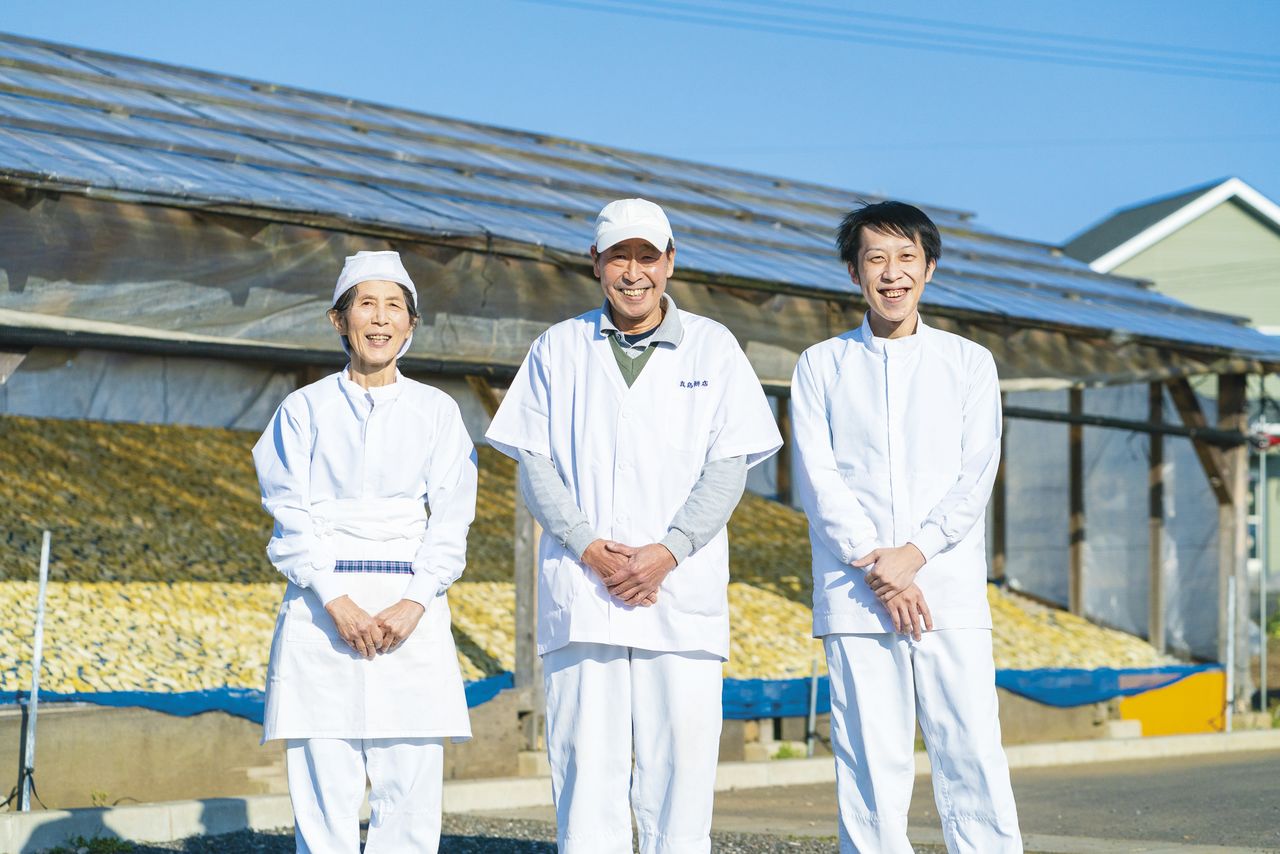
Matori Kōji, right, stands with his parents in front of a drying crop of locally grown sweet potatoes from the Gotō Islands. The third-generation head of kankoro mochi maker Matori is currently exploring new products and markets.
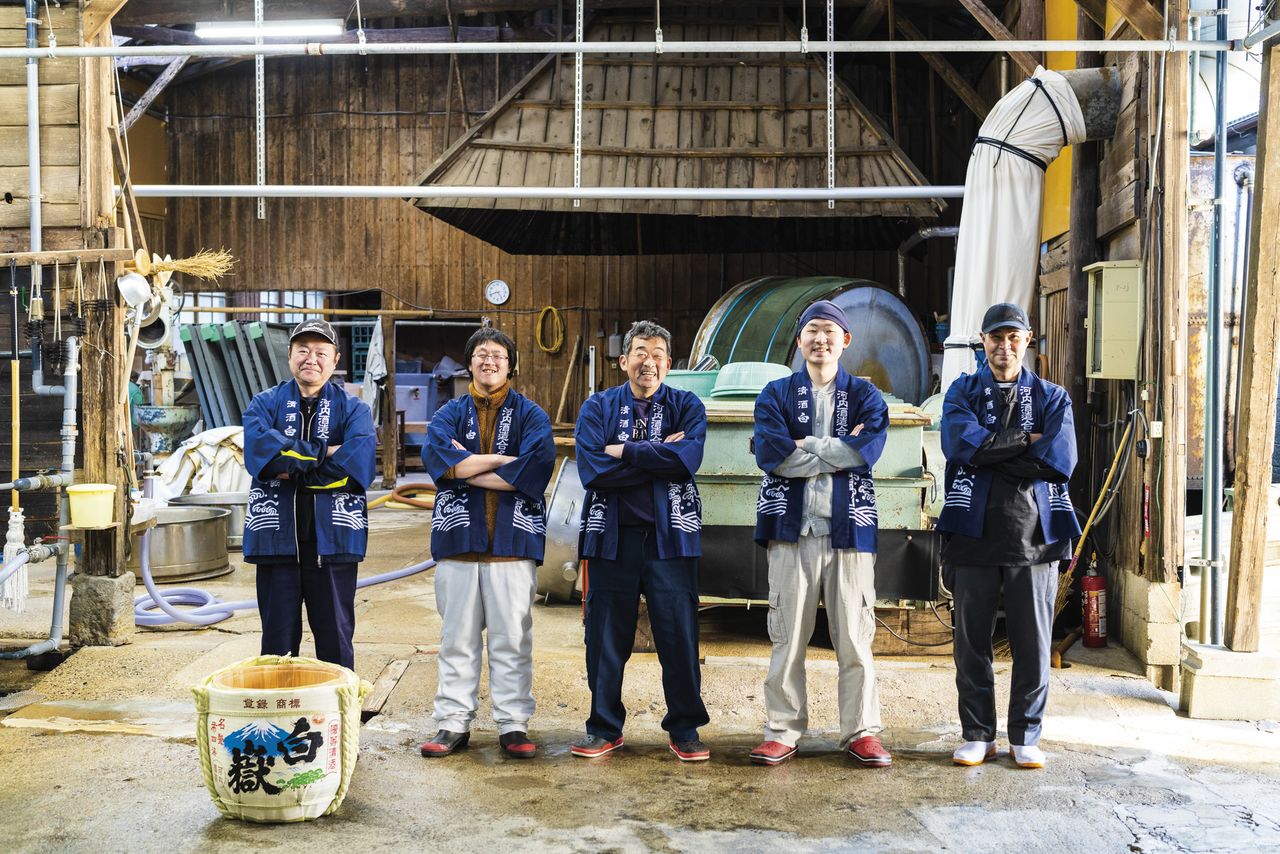
Employees at Tsushima Island’s only sake brewery, Kawachi Shuzō. President Itō Kōichirō, center, is flanked by his son Shintarō, second from right, who returned to the island after studying sake brewing at a university in Tokyo.
There are also hints that the uptick in business and employment opportunities are starting to entice young residents back home. Senno has seen a gradual improvement in residents’ outlooks and says people feel confident in the business relations they have formed through the foundation. There is growing commitment to work together to further develop local industries.
A Model for Other Islands
Senno acknowledges that the foundation has a mountain of issues left to tackle, ranging from manufacturing techniques to logistics to transport costs, but declares confidently that “we’re determined to succeed.” The foundation’s goal is to eventually use its model from Nagasaki to help remote communities in other prefectures, including on the mainland, facing similar demographic and economic challenges. It has started taking baby steps in this direction, expanding its activities to the Amami Islands in Kagoshima Prefecture, and is making plans to branch out into the Tōhoku region of northern Japan.
The foundation’s track record for developing regional specialties into marketable products has drawn attention from a growing number of businesses. Over the last year, the foundation has seen its roles of full-fledged and supporting member firms grow, even amid the COVID-19 pandemic. Senno attributes this in part to more corporations taking concrete steps to integrate the UN’s Sustainable Development Goals into their business practices, but the lucrative opportunities in Japan’s resource-rich regions have been core to the foundation’s success so far. In fact, building local industries and boosting the productivity of Japan’s remote islands and rural areas in a sustainable way may be the best way to building a prosperous future for Japan.
(Originally published in Japanese. Banner photo: Members of a yuzu growers association on Iki Island pose in an orchard. All photos courtesy of Ritōshinkō Chihōsōsei Kyōkai unless otherwise noted.)
Kansai International Airport island Nagasaki regional revitalization
